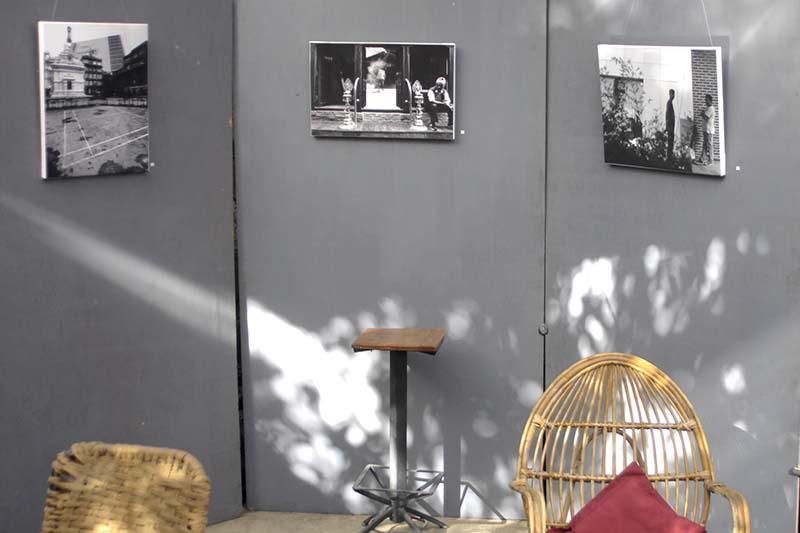Meanings in mergers
KATHMANDU: 'Assignment of Meanings', a photographic exhibition that consists of 16 reconstructed black and white images, began on November 5 at the NexUs Culture Centre, Bakhundole.
The exhibition is the result of a collaborative project between UK-based graphic designer Matthew Magnus and Nepali photographer Abhishek Shah — the duo had participated in 'LASANAA's Artist in Residency' programme for two months at NexUS.
The photographs on display are unique in concept as different images have been merged together using Photoshop. More than four images have been merged to create one photograph, but you won't realise that many photographs have been merged together.
One common thing visible in all photographs is the use of straight lines. Each merged photograph depicts a certain pattern — straight lines (of wood, plastics, metals, bricks and more) have formed different structures like windows, doors, houses, walls, pipes, et cetera.
While in residency, Shah and Magnus were not sure about what to do for many days. "One day we decided to travel around and click photographs randomly. And after returning we realised there was something common in our compositions, that is the placement of lines," revealed Shah for whom photography is a way of meditation that connects him to the spiritual world.
After finding this common element, they decided to merge different photographs "so that the final photograph could strike a meaning to viewers and help them get into a conversation and explore their own meanings about the photographs" as per Shah.
In one of the photos, a group of women and children are seen standing and walking. They are surrounded by walls of huge modern and old buildings from three different sides. The work is so fine that it does not occur to the viewers that the artists have used different photographs of buildings and people to create that one particular photo. And the combination of the past and present is resembled by traditional mud houses and modern-day concrete buildings in this photograph.
In other photographs too, the past is signified by traditional houses, temples, stone taps among others, while the present is depicted by modern buildings, metal fences, plastic materials and so on. Ashmina Ranjit, artist and curator of the exhibition expressed, "This is the meeting of the east and west. Two differing perspectives have been conjoined to add depth and breadth to the work. They have explored the past and present, travelling around the Patan area. And they have juxtaposed the past and present using architecture of the past and present."
These photographs with many meanings are on display till November 20.






